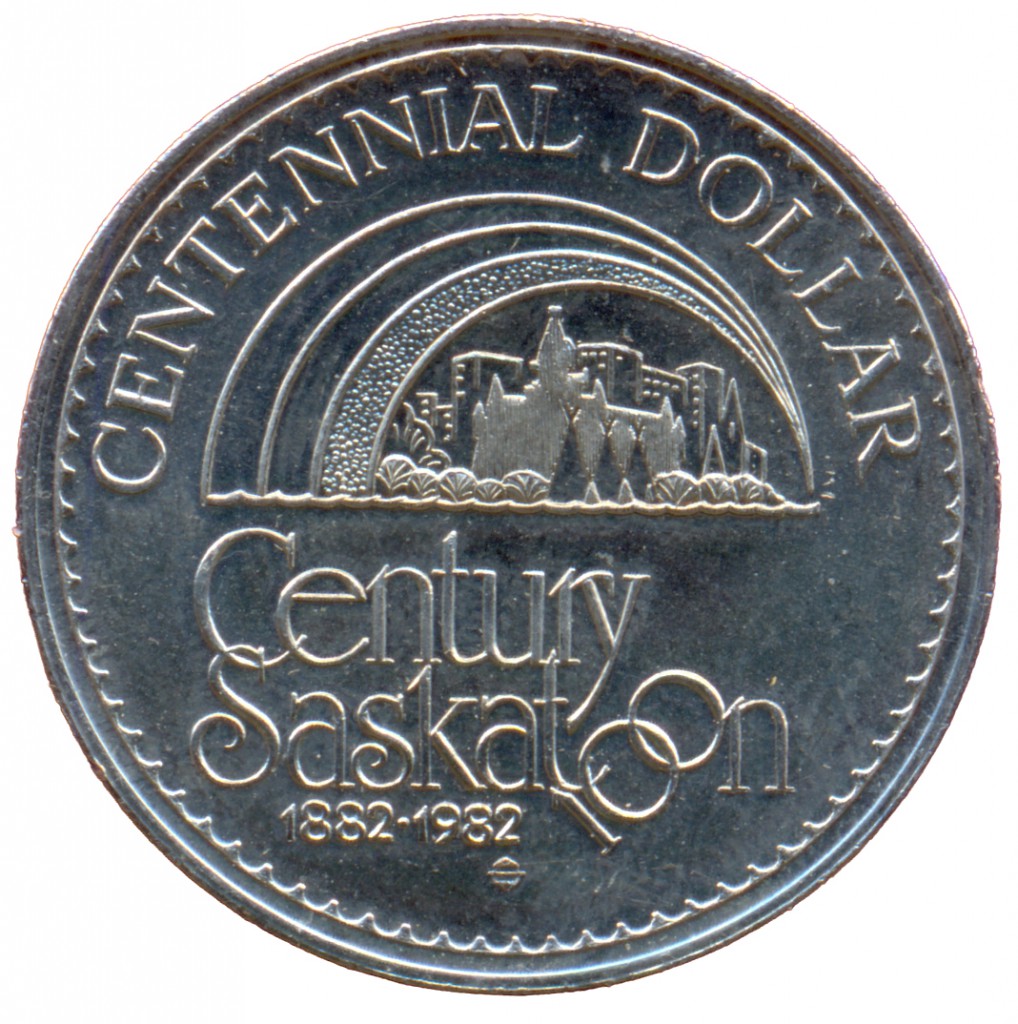On today’s date in 1882, the city of Saskatoon, Sask., was founded by the Temperance Colonization Society, a group of Toronto Methodists who formed in 1881 and wished to establish a capital for their temperance colony.
By the beginning of the 1890s, the Qu’Appelle, Long Lake and Saskatchewan Railway reached Saskatoon, crossing the South Saskatchewan River, where the Senator Sid Buckwold Bridge now stands, and causing a development boom on the west side.
The following decade, Saskatoon’s population exceeded 100 people and a third settlement, Riversdale, was also established to the southwest.

The trade dollar’s reverse features an antique tractor beneath the inscription ‘BRIDGING 100 YEARS’ and above the dates ‘1902-1922,’ during which Saskatoon experienced widespread growth.
In 1903, Saskatoon’s economy was bolstered with the encampment of colonists who needed a place to stop while on their way to present-day Lloydminster; however, the following year, the spring melt caused the collapse of the rail bridge on the South Saskatchewan River.
A Grand Trunk Pacific Railway survey later proposed Hanley, Sask., as its northern terminal between Regina and Prince Albert, but Saskatoon’s Board of Trade sent delegates to Ottawa to discuss the river crossing and proposed city bridges.
Saskatoon was eventually chosen as the divisional centre for both the Canadian Pacific Railway and the Grand Trunk Pacific Railway, and by 1907, both of these companies built bridges near the town.
Following the formation of the Province of Saskatchewan in 1905, Premier Walter Scott focused on establishing a provincial university and agricultural college. Moose Jaw, Prince Albert, Saskatoon, Regina, Qu’Appelle, Indian Head and Battleford were all vying to be the new institution’s home; however, in April 1907, the Board of University Governors voted in favour of Saskatoon.
From the end of the Red River Rebellion until the second decade of the 20th century, Saskatoon continued to experience widespread growth, much of which was attributed to the late 19th-century temperance colony settlement; the economic surge created by the colonists heading to Lloydminster in 1903; the city becoming western Canada’s railway network hub; and the acquisition of the University of Saskatchewan.
1982 TRADE DOLLAR
In 1982, to mark the city’s centennial, a commemorative trade dollar was issued in Saskatoon.
In fact, in the five years leading up to this historic milestone, two commemorative centennial dollars, each portraying a different 20-year period in Saskatoon history, were issued each year.
With reeded edges, a 33-millimetre diameter and a weight of 14 grams, the aforementioned 1982 dollar was struck in nickel. An antique tractor appears on the reverse beneath the inscription “BRIDGING 100 YEARS” and above the dates “1902-1922.”

